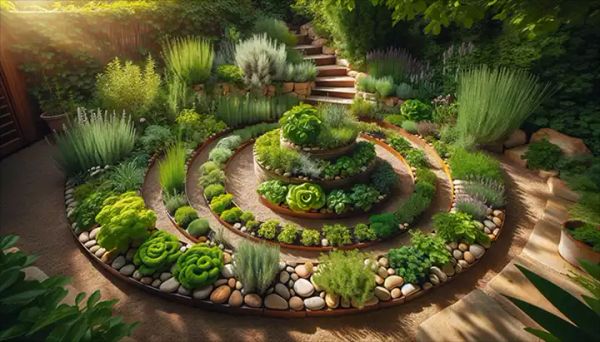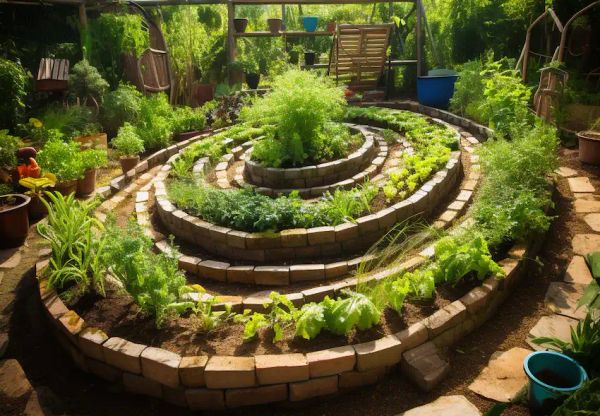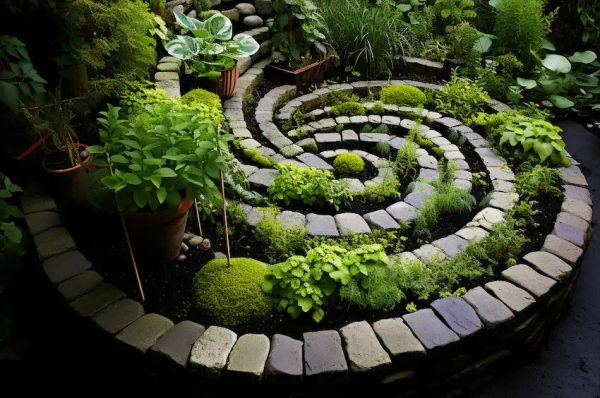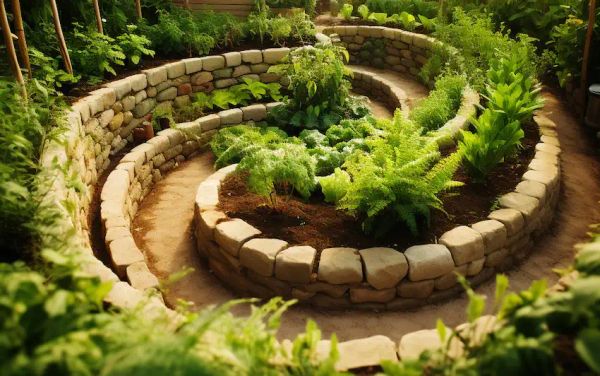Step into the enchanting world of spiral herb gardens, where the beauty of nature’s patterns meets practical gardening. In this guide, we will show you how to construct your own spiral herb garden and provide tips on optimal plant positioning, so you can enjoy the benefits of this visually appealing and space-efficient garden design.

The Essence of Spiral Herb Gardens
Design and Functionality:
Inspired by the Fibonacci sequence, the spiral herb garden combines nature’s elegance with practicality. Its vertical design maximizes space and provides easy access to every herb.
Space Efficiency and Accessibility:
Perfect for small spaces, the spiral structure eliminates the need for bending or stretching, making it effortless to reach every herb.

Benefits of a Spiral Herb Garden
Diverse Microclimates:
The unique shape of the spiral creates different levels of moisture and sun exposure, accommodating a wide range of herbs in one structure.
Improved Drainage and Soil Health:
With its elevated center, the spiral herb garden ensures excellent drainage and creates a healthy root environment.

Aesthetic Appeal and Habitat Creation:
Not only is the spiral herb garden visually stunning, but it also attracts beneficial insects and pollinators, promoting biodiversity.
Crafting Your Spiral Herb Garden
Step 1: Choose Your Location and Design
Select a sunny spot for your garden, ideally with a diameter of about 5-6 feet. Consider the garden’s orientation, with the north side receiving less sun and the south side being sunnier.

Step 2: Construct the Spiral Foundation
Start from the center and use stones or bricks to build your spiral. Gradually increase the height to create a gentle slope.
Step 3: Fill with Soil and Compost
Create nutrient-rich planting beds by using a mixture of garden soil and compost. Pack the soil firmly to prevent sinking.
Step 4: Plant Your Herbs Strategically
Top of the Spiral (South-facing side):
Plant sun-loving and drought-resistant herbs like Rosemary, Thyme, and Oregano. They will thrive in the warmth and excellent drainage of this position.
Middle of the Spiral:
Perfect for herbs that require moderate sun and moisture, such as Parsley, Chives, and Cilantro.
Bottom of the Spiral (North-facing side):
Ideal for herbs that prefer less sun and more moisture. Mint, Lemon Balm, and Tarragon will flourish here.
Step 5: Mulch and Water
Apply mulch to retain moisture and prevent weed growth. Water thoroughly, especially during the establishment phase and in dry conditions.
Step 6: Regular Maintenance
Harvest your herbs regularly to encourage new growth. Keep an eye on soil health and watch for pests or diseases.
Your spiral herb garden is more than just a place to grow culinary delights; it is a living work of art that blends functionality with aesthetic appeal. By carefully choosing your herbs and considering their placement in relation to sunlight and moisture, you will create not only a garden but a thriving ecosystem.
Enjoy the journey of nurturing your spiral herb garden, a spiral of life that offers beauty, flavor, and the joys of gardening in harmony with nature.




